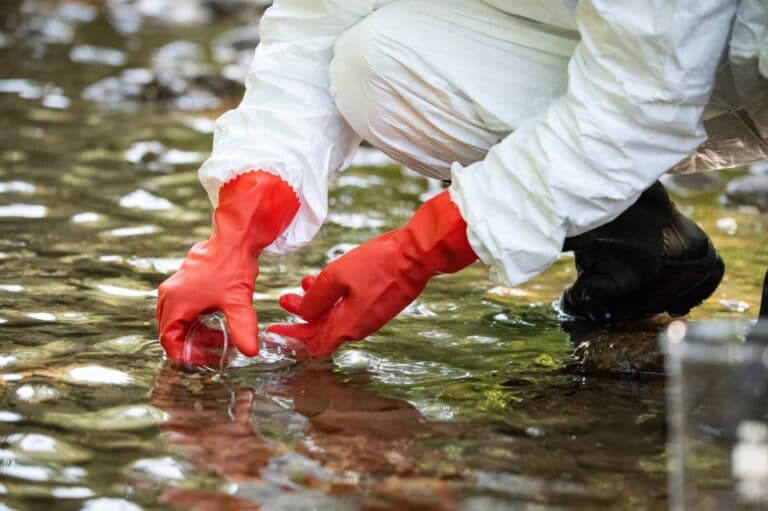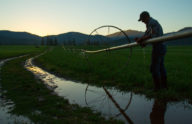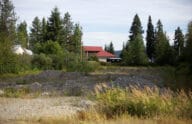What is the Clean Water Act?

The Clean Water Act is one of the more commonly known pieces of federal legislation in America, but the history of the Act, why it was originally passed, and what it actually does is much less widely understood.
What is the Clean Water Act, and what does it do?
How did the Clean Water Act become law?
Congress passed the Clean Water Act (CWA) in 1972, two years after the first Earth Day celebration. Like the Clean Air Act (1970) and the Endangered Species Act (1973), the CWA reflected Americans’ growing concern about the environment.
The Clean Water Act (CWA) built on the Federal Water Pollution Control Act of 1948, the first federal environmental protection law. The CWA’s mission is to “restore and maintain the chemical, physical, and biological integrity of the nation’s waters.” Congress intended the Act to make all of America’s waterways “fishable and swimmable” by 1983, and even more ambitiously, to end pollution entirely by 1985.
President Nixon initially vetoed of the Clean Water Act, citing the bill’s “unconscionable” and “budget-wrecking” costs, but Congress overrode the veto. Now, nearly 1% of U.S. GDP is spent to ensure clean water and waterways, and some estimates claim billions in economic benefits from improved water quality.
The CWA’s passage in the ’70s was propelled by many reasonable environmental concerns at the time, but there was also a significant amount of hyperbole and exaggeration about the imminent death of the planet. Some of these exaggerated stories included burning rivers, species die-offs, a coming ice age, and air pollution so bad city dwellers would need gas masks.
What does the Clean Water Act do?
Enforcement of the Clean Water Act is split between the Environmental Protection Agency (EPA) and the Army Corps of Engineers. Together they are tasked with regulating pollution and protecting wetlands.
Working with the states, the EPA approves state water quality standards that are used in a permit system. The EPA also commissions environmental impact studies when something new is to be built, or land is converted to a new use, to protect nearby waterways.
By many metrics, the CWA has accomplished its goal. Pollution levels in many of the nation’s lakes, rivers, and streams have dropped significantly since the 1960s, benefitting both public health and the environment. Still, as many as half of all rivers still fall below the EPA’s “fishable and swimmable” standard (compared to 60% when the CWA passed).
In addition to regulating the “waters of the United States,” the CWA also gives the EPA power to regulate land considered natural wetlands. To prevent aquatic habitats from being disturbed, the law restricts filling in creek beds, grading, dredging, and drilling, even on private property.
The EPA has its own Criminal Investigation Division, which brings civil or criminal cases against violators of the CWA. Along with punitive fines and jail time, CWA rulings often include restitution to restore affected waters. When a Tyson poultry plant released strong acid used to make chicken feed into the sewers of Monett, Missouri, it triggered a chain reaction that killed more than 100,000 fish. The Clean Water Act made it possible to hold Tyson responsible for clean-up efforts, as well as high fines. When a landfill in Hawaii allowed a stormwater storage tank to overflow, raw sewage and medical waste plagued Oahu beaches for several weeks. The culprits’ settlement with the EPA helped restore damaged coral reefs. When careless or unscrupulous actors create ecological havoc, the Clean Water Act helps to restrain and remedy those bad actions.
But what problems does the Clean Water Act create?
The Clean Water Act did limit pollution and contribute to cleaner water, but it has also created problems of its own. The broad scope of powers that the EPA claims makes it possible for property owners to break the law without meaning to, or realizing they are. Property owners must navigate a maze of red tape and regulatory jargon to use their land, or risk prosecution. Cumbersome permits are required for small-scale projects. Often, regulators will demand months-long, costly impact studies before even deciding if a permit is needed.
Government misuse of the Clean Water Act stems from executive branch overreach and sometimes results in the outright harassment of landowners. Americans who fill in a swampy spot in their farmland, or dig a retaining pond, may find themselves in litigation for years. The EPA and Army Corps interpret the CWA’s delegated powers—and their definition of “waters of the United States”—so broadly that almost any piece of land can be brought under their control. Many development projects are stalled for years for no real environmental reason.
For example, in 2012, a California family business was ordered to stop farming its land when the Army Corps of Engineers declared the “vernal pools” (rain puddles) on their farm to be wetlands. They sued but were slapped with a retaliatory penalty totaling millions of dollars. In 2011, the EPA suddenly revoked the CWA permit for a coal mine in West Virginia, shutting it down even though it wasn’t breaking the law. Similar cases play out every day, and across the nation, pitting individual landowners against the massive bureaucratic machine. State and local jurisdictions, which once had control of both water quality and land use, are pushed aside.
The Clean Water Act moving forward
The Clean Water Act’s aggressive regulatory approach (permits and penalties) did help limit single-source pollution from factories, mills, and mines and create important environmental benefits. But the heavy-handed implementation of the Clean Water Act also has allowed the regulatory micromanaging of property owners with no real environmental justification and often does more to harm farmers, ranchers, and members of the public than it does to clean up polluted waterways.
The solution to this problem is for Congress to update the Clean Water Act. So far Congress has failed to do so; however, the Supreme Court could provide some relief by resolving some of the CWA’s ambiguities. For example, in the Supreme Court case Sackett v. United States, the Court will have an opportunity to better explain what sort of wetlands can be regulated by the federal government. This could go a long way to resolve the uncertainty landowners face when they plow fields or attempt to build new homes. A mistake in identifying a wetland today can result in tens of thousands of dollars in fines each day, as well as time in federal prison. Similarly, in another Supreme Court case, Louisiana v. American Rivers, the Court temporarily limited the ability of states to stop Clean Water Act permits for reasons unrelated to water quality. The Court is further considering whether to hear more argument in that case.
The Clean Water Act has been one of the most impactful (for good and bad) pieces of legislation in American history. Understanding how it has improved the environment, as well as understanding how it has been abused, is critical to knowing how to improve it—via Congress and the Supreme Court—in the future.








